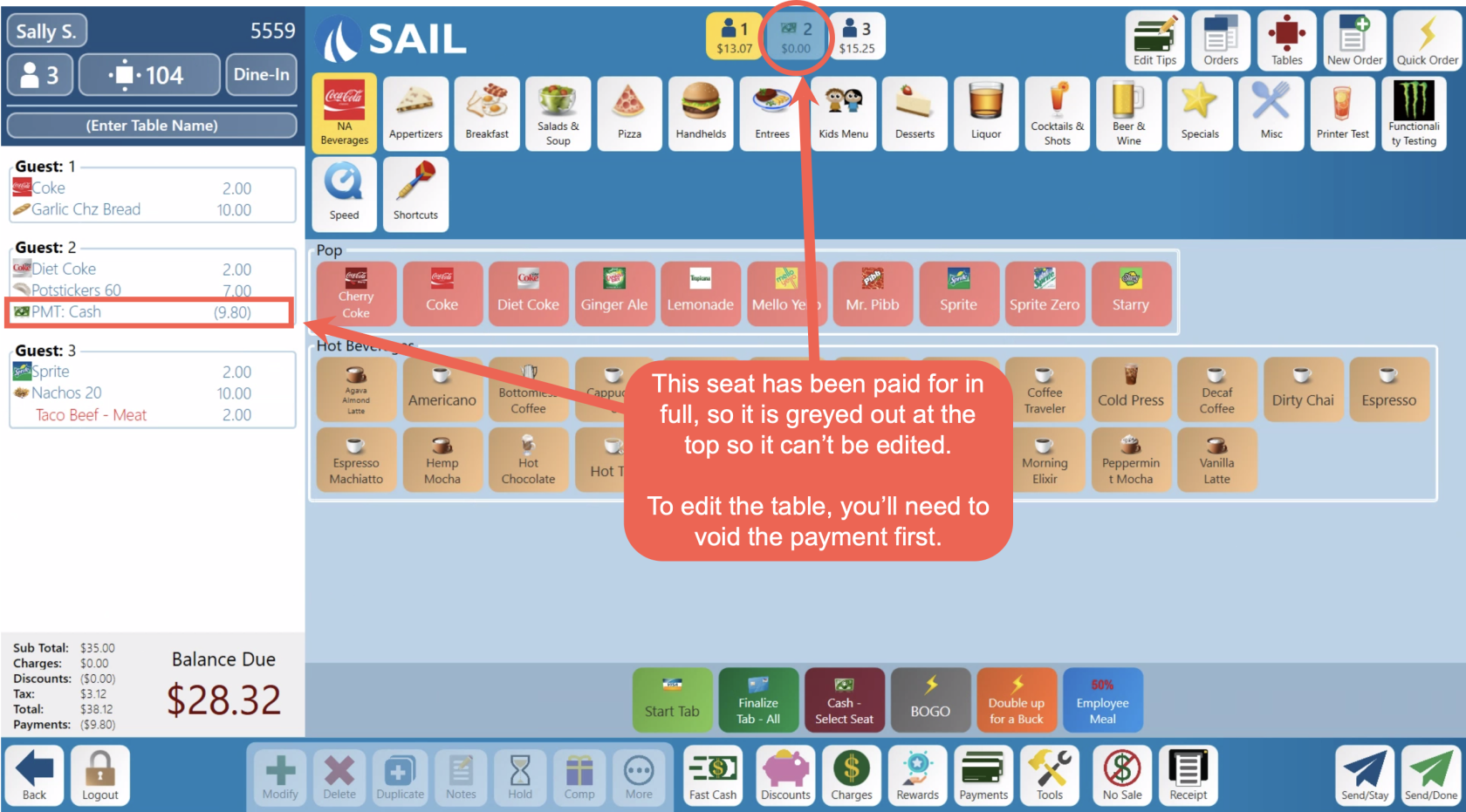Release 2025.7.2 "Tiramisu"
Notes: This release consists of 2 Improvements. Use the page navigation section on the top left of this screen to jump between the features you'd like to read about.
**This release WILL require a handheld update to version 2025.7.2**
If you would like any additional information or help setting up any of these new features, please contact support at:
Support@ingageit.com or call (612) 861-5277
Improvements - Guardrails
1. Locking Seat with Payment
- To help prevent tables from getting out of balance, we’ve added a new guardrail: Once a seat has been fully paid, it will now be greyed out at the top and locked from changes. Here’s what that means:
-
If a seat is paid, you can’t:
- Add or modify items on that seat
- Transfer items off that seat to a new table or to another seat
- Split items involving the seat
- Add gratuity or other charges (paid seats will be skipped)
- You can still:
- Comp/Void an item on a paid seat (this is a setting per job role called "Adjust paid seat")
-
this is a setting currently turned on for you — we can turn it off per job role if you'd like only certain people to be able to do it)
-
- Move a payment from one seat to another (with confirmation)
- Comp/Void an item on a paid seat (this is a setting per job role called "Adjust paid seat")
- Other notes:
- Paid seat items won’t be included when using “Select All” at the bottom of the check
- Seats unlock if the payment is voided or moved
- Seats also unlock if the balance goes negative (e.g. due to a comp/void)
Why this matters:
In a busy service environment, it's common for seats to be paid at different times. Without guardrails, staff might accidentally add or move items on a seat that’s already been paid, causing the check to become unbalanced — for example, showing more items than were actually paid for, or leaving unpaid items on a paid seat. This can create confusion for staff, delays for guests, and errors in reporting or tip calculations.
By locking a seat once it’s paid, the POS helps protect the integrity of the check and prevents mistakes that are often hard to unwind. It ensures a smoother, more accurate flow from order to payment — especially in fast-paced and multi-server environments.
That said, you’re not stuck — if adjustments are needed, the payment can be voided, changes can be made, and then you can use payment reapply to re-close the check correctly. It’s all about giving you control without the risk of accidental mistakes.
2. Require Loading a Customer to use Customer Account buttons
- To help ensure accuracy and prevent errors, we’ve added a new safeguard around using Customer Accounts.
- You now must attach a customer to the order before you can use any of the Customer Account functions:
-
Customer Account Payment, Customer Account Deposit, Customer Account Refund and the Customer Account Tender Type
-
- If no customer is attached, this is the error message you will get when you try to use one of those buttons
Why this matters:
We’ve seen a number of cases where staff were accidentally trying to post deposits or payments to customer accounts without actually having a customer attached — which led to confusion, failed day closes, or balances that couldn't be tracked properly.
This guardrail makes sure that every deposit or charge is tied to the correct customer from the start, so your account records stay accurate and clean.
Fixes
- Variable Charges were charging $0 instead of the desired amount
- NCA was Changing to $0 if the table was reopened


